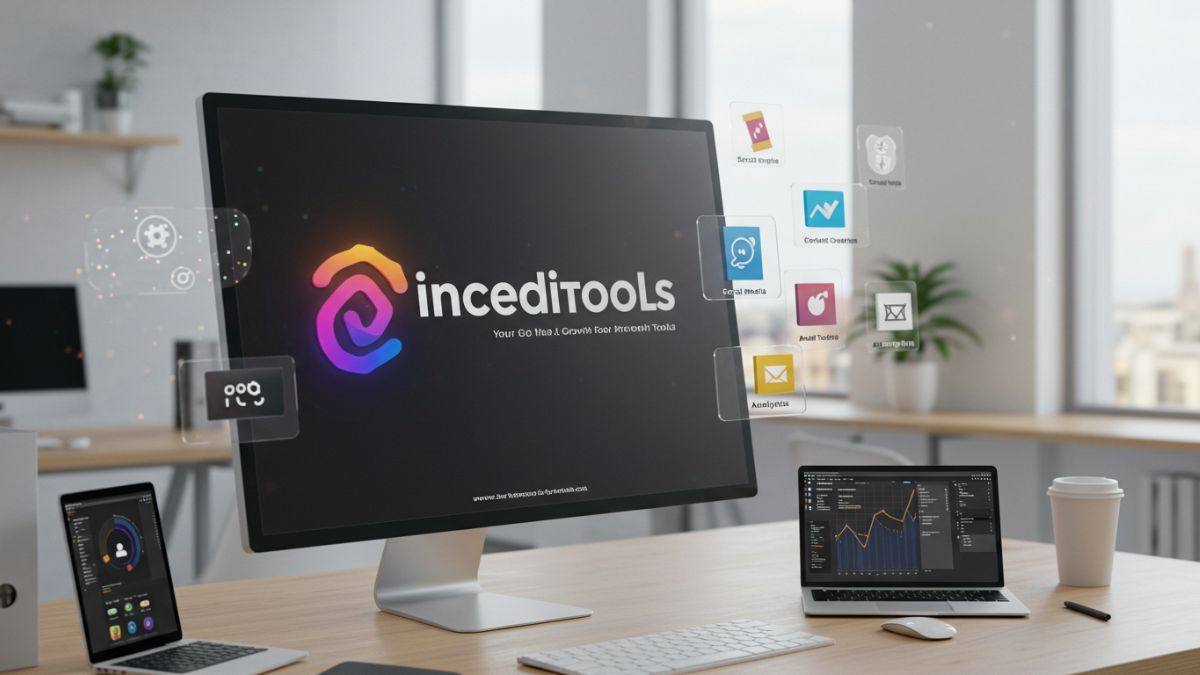GENERAL
Emerging Threats in Cybersecurity: Identifying and Mitigating Backdoor Vulnerabilities

In today’s digital era, cybersecurity threats are becoming exceedingly sophisticated. As technology evolves, so does the dexterity of hackers who continuously develop innovative methods to infiltrate systems, steal sensitive data, and disrupt critical operations. Because these threats are ever-changing, bolstering cyber security requires a proactive strategy. Engaging security posture improvement services becomes essential to ensure systems are robust and resilient against potential vulnerabilities, particularly those introduced via backdoors.
With organizations increasingly reliant on digital infrastructures, the risk of unauthorized access through backdoors is a persistent threat. The frequency of cyberattacks underscores the need for businesses to adopt vigilant strategies that encompass the identification, detection, and mitigation of such vulnerabilities. These practices form the cornerstone of effective cybersecurity frameworks that protect sensitive information and guarantee the continuous functioning of services.
Understanding Backdoors in Cybersecurity
Backdoors serve as covert methods for bypassing regular authentication processes in computerized systems. They allow unauthorized users to access systems stealthily, often going unnoticed for prolonged periods. Backdoors can result from unintentional errors such as poor coding practices, or they may be intentionally placed by insider threats or external malicious actors seeking to exploit inherent weaknesses within digital infrastructures.
The insidious nature of backdoors represents a significant threat to system security. Their ability to remain hidden while facilitating unauthorized access leaves systems vulnerable to extensive damage. Recognizing the mechanisms and channels through which backdoors operate is crucial for organizations aiming to strengthen their cybersecurity posture. Such understanding lays the groundwork for designing comprehensive security measures that effectively counteract these covert threats.
Standard Methods of Detecting Backdoor Vulnerabilities
Detecting backdoor vulnerabilities is a fundamental aspect of cybersecurity. To identify potential threats, experts employ a range of tools and techniques. Network analysis tools are crucial as they provide insights into traffic patterns, enabling the detection of anomalies that could indicate unauthorized access attempts. Regular system audits further complement these efforts by examining configurations and permissions for inconsistencies.
Additionally, malware analysis is instrumental in revealing potential backdoors. By dissecting software operations and identifying suspicious functionalities, cybersecurity teams can uncover vulnerabilities preemptively. Such analyses are vital in constructing resilient cybersecurity defenses, helping thwart potential preemptive exploitation attempts.
Strategies for Safeguarding Systems Against Backdoors
Implementing a multi-tiered security approach forms a foundational defense against backdoor threats. This strategy involves the deployment of advanced firewalls and intrusion detection systems that collectively monitor and block unauthorized access attempts. Network segmentation isolates critical systems from general network traffic and is a crucial protective measure.
Moreover, education and training programs are vital to enhance employees’ cybersecurity awareness. Human error remains a significant vulnerability that cybercriminals exploit. Organizations can significantly diminish this risk by cultivating a cybersecurity-conscious culture. Informing staff about best practices and evolving threat landscapes ensures that everyone within the organization contributes to a robust security environment.
The Role of SIEM in Cybersecurity
Modern cybersecurity plans must include Security Information and Event Management (SIEM) systems. SIEMs collect and analyze security events from various sources in real-time, providing comprehensive insights into network activities. This capability allows organizations to identify and address anomalies, including possible backdoor threats, quickly.
Beyond real-time detection, SIEMs facilitate historical data analysis, which helps build a complete picture of attempted breaches over time. This information is crucial for identifying patterns and optimizing security measures. By integrating SIEM solutions, organizations can ensure a proactive and informed approach to threat management.
Case Studies: Real-Life Incidents of Backdoor Exploits
Several significant backdoor exploitation incidents have underscored the ongoing cybersecurity challenges in recent years. These real-world cases are stark reminders of the potential risks, even for large organizations with substantial cybersecurity resources. The lessons learned from such situations emphasize the necessity of improved security measures and the significance of ongoing monitoring.
Examining these examples provides valuable information about the tactics employed by cybercriminals. Understanding these strategies enables organizations to implement effective countermeasures, reducing the likelihood of similar exploits. Learning from past incidents is crucial for shaping more robust and adaptive security frameworks.
Future Trends in Cybersecurity Threat Detection
Emerging technologies created to counter changing threats will become more and more critical in cybersecurity in the future. Artificial intelligence (AI) and other innovations are poised to transform threat detection and mitigation procedures. Due to AI’s enormous potential for anticipatory threat analysis, systems may anticipate and react to attacks more effectively and efficiently. AI offers immense potential for anticipatory threat analysis, enabling systems to predict and respond to threats more efficiently and effectively.
Integrating artificial intelligence in cybersecurity will likely become standard practice, enhancing capabilities for predictive analysis and automated threat responses. By adopting these advanced technologies, organizations can significantly improve their resilience against cyberattacks, paving the way for a more secure digital ecosystem.
Conclusion
Establishing a comprehensive understanding of backdoor vulnerabilities and the latest trends in cybersecurity is fundamental for safeguarding digital infrastructures. By leveraging cutting-edge technologies, maintaining continuous monitoring, and fostering an informed workforce, organizations can enhance their defenses against persistent cyber threats.
Businesses may safeguard their data and operations and ensure a safer digital future by implementing proactive measures and attentive threat detection procedures. The key to effective cybersecurity lies in anticipating and adapting to changing threat landscapes, providing resilience and security in the face of evolving challenges.
GENERAL
French Language Learning for Kids: A Joyful Path to Bilingual Brilliance

Why French Language Learning for Kids Matters More Than Ever
French language learning for kids is more than just an academic endeavor — it’s an investment in a child’s cognitive, social, and emotional development. In a world that increasingly values global awareness and multilingual communication, learning French opens doors to culture, travel, and career opportunities. More than 300 million people speak French across five continents, making it one of the most influential languages worldwide. For children, mastering French early in life can feel natural and effortless when the right tools and environment are in place.
When children begin learning a new language at a young age, their brains absorb information like sponges. They can mimic pronunciation accurately, adopt correct grammar intuitively, and develop confidence in communicating with others. Early bilingual exposure, particularly with languages like French that share roots with English, boosts reading and writing skills in both languages. It sharpens focus, problem-solving, and memory, laying the foundation for long-term academic success.
Making French Part of Everyday Life
A major key to successful French language learning for kids is immersion — but immersion doesn’t necessarily require relocating to a French-speaking country. It’s about integrating the language naturally into daily routines in ways that are playful and engaging. Children respond best to repetition and context, so using French words during everyday activities makes the language feel relevant and alive.
Label household objects with their French names and refer to them during the day. Say “bonjour” in the morning, ask “tu veux du lait?” at breakfast, or sing a few verses of a French nursery rhyme during playtime. These small but consistent habits create a French-rich environment where learning happens passively and joyfully.
Fun With French Through Media and Storytelling
Media is a powerful ally in French language learning for kids. Children’s brains are wired to learn through visual and auditory cues, making songs, cartoons, and storybooks ideal for building vocabulary and comprehension.
Picture books with French-English text and simple illustrations help children make associations between words and meanings. Stories like “Petit Ours Brun” or “Le Petit Prince” (adapted for younger audiences) expose kids to both everyday and imaginative vocabulary. Many French children’s books are written with repetitive phrases and rhythmic patterns that naturally reinforce new language structures.
Songs also play a vital role. Tunes like “Frère Jacques” or “Alouette” teach vocabulary, rhythm, and pronunciation. When kids sing along, they internalize grammar patterns without even realizing it. Watching French-language cartoons or educational videos with subtitles can further enhance listening skills and cultural understanding. Platforms like Netflix, YouTube, or kid-focused language learning apps often provide bilingual options that are fun and interactive.
Turning Playtime into Learning Time
Learning French doesn’t have to feel like schoolwork. In fact, the most effective strategies often resemble play. Children thrive when they’re having fun, and incorporating games into language learning boosts motivation and retention.
Classic games like memory match with French vocabulary cards, bingo with animals or colors, and Simon Says in French (“Jacques a dit”) turn abstract words into active learning. Online games and interactive apps tailored to French for children often include characters and rewards that keep kids engaged and eager to progress.
Craft activities also offer opportunities to learn. Drawing and labeling parts of the body, making a “weather wheel” with French terms, or baking while following a simple French recipe can all become immersive language lessons. The goal is to make the language part of an enjoyable experience so that learning feels natural, not forced.
The Importance of Routine and Repetition
Consistency is one of the most important elements of French language learning for kids. Language retention improves when learning becomes part of a child’s routine. Short, daily sessions are far more effective than infrequent, lengthy ones. Even 15 minutes a day can yield impressive results over time.
Designate a “French time” each day — perhaps right after breakfast or during bedtime stories. Rotate between songs, stories, games, and speaking practice to keep things fresh while reinforcing previous learning. Children may initially resist unfamiliar words, but as patterns repeat and familiarity grows, confidence blossoms.
Encourage children to speak as much French as they’re comfortable with, even if it’s just single words or simple phrases. Praise their efforts enthusiastically. Mistakes are a natural and essential part of language learning, and the goal is fluency, not perfection.
Cultural Exploration as a Learning Tool
One of the greatest advantages of learning French is access to a vibrant and diverse cultural world. Bringing French culture into the home makes the language more meaningful and memorable for children. This can include cooking traditional French dishes together, celebrating French holidays, or watching French animated films.
Bastille Day, for example, is a fun opportunity to learn about French history while making tricolor crafts or enjoying French pastries. Kids can also learn about landmarks like the Eiffel Tower, French artists like Monet, or music traditions like chansons. Culture gives the language context, and children begin to see French not just as a subject, but as a living, breathing way of life.
Involving the Whole Family
French language learning for kids becomes even more effective when parents and siblings join the journey. You don’t need to be fluent to support your child — simply learning together fosters connection and motivation. Practice basic greetings, read bilingual books as a family, or challenge each other with new vocabulary games.
Children are more likely to value and persist in learning when they see their family engaging alongside them. Creating a household culture where language learning is fun and communal leads to deeper bonds and sustained interest.
Planting Seeds for a Bilingual Future
French language learning for kids is a powerful gift that offers cognitive, emotional, and cultural advantages. By weaving the language into daily life, using engaging media, introducing play-based learning, and celebrating French culture, children can develop both a love for the language and the skills to use it confidently.
Parents and educators alike should view early French learning not as a task but as an adventure. With patience, creativity, and consistency, children can grow into enthusiastic bilingual speakers, well-equipped to explore a world beyond borders.
GENERAL
Increditools: Your Go-To Resource for Digital Growth Tools

The digital marketing world evolves at lightning speed, and staying ahead means using the right tools to expand your online presence. This is where Increditools comes into play. Whether you’re a social media influencer, a content creator, or a small business owner, Increditoolss provides in-depth reviews and guidance on the best digital growth tools available today.
Designed to help users make informed decisions, the platform curates trustworthy recommendations rather than offering direct services. In this article, we’ll break down what Increditoolss is, how it works, and why it has become a popular destination for marketers seeking growth strategies.
What Exactly is Increditools?
Increditools is an online platform that focuses on reviewing and ranking tools for growing social media accounts. Unlike services that offer likes or followers directly, Increditoolss acts as a third-party guide, pointing users toward tools that are safe, efficient, and aligned with social media guidelines.
The platform covers a wide array of social networks including Instagram, TikTok, Facebook, LinkedIn, and YouTube. Its main objective is to simplify the decision-making process for users who want genuine engagement and sustainable growth on their digital platforms.
How Increditools Works
Increditools isn’t a growth tool by itself. Instead, it reviews a variety of third-party tools and services that help with audience growth, engagement, and automation. Users visit the site to explore expert-written reviews, comparison articles, and tutorials on how to make the most of each recommended service.
Each tool is evaluated based on multiple criteria such as:
-
User experience
-
Security
-
Pricing
-
Customer support
-
Effectiveness
This ensures that readers get a well-rounded understanding of what each tool offers before making a decision.
Key Benefits of Using Increditoolss
For anyone navigating the complex world of digital marketing, Increditoolss offers several advantages. Here’s why it has become a go-to platform for social media users and marketers alike:
1. Time-Saving Research
Instead of testing dozens of tools yourself, Increditools does the heavy lifting. The platform offers well-researched insights, saving you hours of manual research.
2. Trusted Recommendations
The reviews published are based on genuine tests, user feedback, and real-world performance. This makes the recommendations more reliable compared to user-submitted review sites.
3. Platform-Specific Insights
Increditoolss categorizes tools by social platform, allowing users to find tailored suggestions for Instagram, TikTok, Twitter, and more. This ensures the tools are relevant and effective for the platform you want to grow on.
4. Updated Content
The digital landscape is ever-changing. Increditoolss regularly updates its content to reflect the latest trends, algorithms, and tool performance, ensuring accuracy and relevance.
Increditools and Social Media Growth
Social media growth is no longer just about posting content. It involves targeting the right audience, using the right hashtags, and leveraging tools to automate and optimize engagement. This is where Increditoolss shines—it provides you with the resources to identify which tools can help you do all of this safely and effectively.
Whether you’re an Instagram influencer looking for organic followers or a YouTuber hoping to boost your viewership, Increditoolss presents multiple growth strategies backed by verified tools.
Top Features Found on Increditoolss
The platform goes beyond simple tool recommendations. Here are some key features you can expect from Increditools:
– Comprehensive Reviews
Every tool is reviewed with pros and cons, pricing, unique features, and user experience details.
– Beginner-Friendly Guides
If you’re just getting started with social media growth, the blog section on Increditoolss offers tutorials and beginner guides that explain how to use different tools effectively.
– Comparison Articles
Can’t decide between two tools? Increditoolss has detailed comparison posts that highlight the differences, helping users pick the better option.
– Legitimacy Focus
The site avoids recommending black-hat or shady services. Most tools promoted follow platform guidelines, reducing your risk of account bans or suspensions.
Is Increditools Legit and Safe?
One of the most common questions users have is whether Increditools is trustworthy. The short answer is yes. The site doesn’t sell growth services directly, which reduces the risk of scams. Instead, it recommends tools based on performance and legitimacy.
Also, Increditoolss often includes warnings about tools that may have questionable practices, helping users avoid services that could harm their accounts.
Who Should Use Increditools?
Increditools is suitable for a wide range of users, including:
-
Influencers looking to grow their personal brand
-
Content creators wanting to expand their audience
-
Small businesses aiming to improve online visibility
-
Digital marketers searching for reliable automation tools
Regardless of experience level, the site offers value to both beginners and seasoned professionals in the social media space.
Cost of Using Increditools
Another reason for Increditools’ popularity is its accessibility. The platform itself is free to use. All content, including reviews, tutorials, and comparison posts, is available without a subscription.
However, the tools it reviews may have their own pricing structures. Increditoolss clearly lists the costs involved with each tool, giving you the information you need to choose what fits your budget.
Final Thoughts on Increditoolss
In a digital world filled with misinformation and unreliable services, Increditools stands out as a reliable guide for social media growth tools. It doesn’t promise overnight success but instead provides well-rounded reviews and educational content to support long-term growth.
GENERAL
Thesmallbusinesstimes: Your Ultimate Resource for Small Business Growth

In today’s digital era, reliable information can make or break a small business. With countless platforms offering generic advice, entrepreneurs often find themselves lost in a sea of irrelevant content. That’s where thesmallbusinesstimes comes in — a focused and practical online destination for small business owners, startups, and aspiring entrepreneurs looking for credible guidance and real-world strategies.
Understanding thesmallbusinesstimess
thesmallbusinesstimes is a specialized website committed to providing valuable resources, news, and expert insights tailored specifically to the needs of small business owners. From planning your first business idea to scaling an established enterprise, this platform offers tools and tips grounded in practical application, not just theory.
Unlike traditional business news outlets that prioritize corporate headlines, thesmallbusinesstimess concentrates entirely on the small business ecosystem. This includes side hustlers, freelancers, brick-and-mortar store owners, and digital entrepreneurs.
Why thesmallbusinesstimes Is the Go-To for Entrepreneurs
With an overwhelming number of online sources, why should entrepreneurs turn to thesmallbusinesstimes?
1. Targeted Small Business Content
Unlike generic business websites, thesmallbusinesstimess is tailored to address the unique challenges faced by small business operators. Its content focuses on budget-friendly strategies, startup hurdles, customer retention tactics, and practical growth plans.
2. Straightforward Language
The platform delivers content in clear, easy-to-understand language. There’s no heavy jargon or corporate speak—just actionable insights written for real people running real businesses.
3. Regular Updates
Small businesses operate in a rapidly changing environment. thesmallbusinesstimess provides frequent updates, ensuring readers stay informed about new trends, technologies, and policy changes that could impact their operations.
Key Topics Covered on thesmallbusinesstimes
thesmallbusinesstimes provides a broad spectrum of small business content, carefully organized to help readers navigate their entrepreneurial journey. Some of the main categories include:
Business Formation and Startup Guidance
Starting a business involves more than just an idea. thesmallbusinesstimess offers comprehensive startup guides covering business structure, licensing, permits, branding, and first-year budgeting tips.
Marketing and Sales Techniques
Marketing is crucial for growth, and the platform provides low-cost digital marketing strategies, including email marketing, social media campaigns, local SEO, and customer engagement tips designed for small budgets.
Financial Tips and Money Management
Managing finances is a top priority for entrepreneurs. From business banking tips to tax-saving strategies and loan application advice, thesmallbusinesstimes educates readers on keeping their business financially healthy.
Tools and Software Recommendations
Choosing the right tools can increase efficiency. The site reviews accounting software, CRM systems, eCommerce platforms, and productivity tools suitable for small-scale operations.
Legal and Compliance Advice
Staying compliant is vital. thesmallbusinesstimess shares essential legal information about business licenses, employee rights, contracts, and data protection to help avoid costly legal mistakes.
Real Success Stories Featured on thesmallbusinesstimes
Success stories are a hallmark of thesmallbusinesstimes. These inspiring narratives from everyday entrepreneurs highlight how people have turned simple ideas into successful ventures. Readers learn from real-world experiences—what worked, what didn’t, and what could be done differently.
These case studies cover a range of industries, from food trucks and local gyms to online services and consulting businesses. They not only inspire but also provide practical blueprints for others to follow.
How thesmallbusinesstimes Builds Community
Running a small business can feel isolating, especially for solo entrepreneurs. That’s why thesmallbusinesstimess goes beyond being just a website. It fosters a sense of community through its blog comments, email newsletter, and social media engagement.
Subscribers gain access to exclusive content, early notifications of webinars, and Q&A sessions with small business experts. This interactive approach helps build relationships and support networks among like-minded individuals.
Expert Advice Without the Overwhelm
One of the standout features of thesmallbusinesstimess is its commitment to simplifying complex topics. Whether it’s explaining how to form an LLC or how to run Facebook ads, the platform breaks down each subject into digestible parts.
Articles are often supported by real-life examples, templates, checklists, and downloadable tools, helping readers implement strategies immediately without the need for outside consultants.
Trusted By Entrepreneurs Across Industries
thesmallbusinesstimes isn’t limited to one niche. Its diverse content attracts users from multiple industries—retail, tech, health, food, education, and services. This cross-industry appeal makes the platform a one-stop-shop for anyone running or launching a small business.
Because the platform is curated by a team of writers, business consultants, and industry insiders, the content reflects a mix of perspectives, providing a well-rounded experience for the reader.
Future Plans for thesmallbusinesstimess
To expand its value offering, thesmallbusinesstimes plans to introduce additional features in the near future. These include:
-
A podcast featuring interviews with startup founders
-
Webinars on niche topics such as eCommerce logistics or local SEO
-
A business toolkit with calculators, pitch deck templates, and customizable business plan formats
-
A directory for small business services, including accounting, legal help, and marketing consultants
Each new feature aims to further support entrepreneurs in their daily challenges and long-term growth plans.
Conclusion: Why thesmallbusinesstimess Is a Must-Read for Business Owners
If you’re serious about starting or growing a small business, thesmallbusinesstimes is an essential resource. The site goes beyond theory, offering practical steps and real solutions tailored for today’s entrepreneurs.
From expert advice to inspiring stories and step-by-step guides, thesmallbusinesstimess delivers content that empowers, educates, and connects. With a focus on relevance, accessibility, and authenticity, it remains a standout platform in the world of small business support.
-

 GENERAL12 months ago
GENERAL12 months agoFrom Fan Art to Original Works: The Diversity of doujindesu Creations
-

 Entertainment8 months ago
Entertainment8 months agoEnchantment & Excitement: Crafting Unforgettable Event Experiences
-

 GENERAL10 months ago
GENERAL10 months agoEngland Business Visa Requirements for American and International Citizens in 2025: A Guide for Entrepreneurs
-

 GENERAL8 months ago
GENERAL8 months agoCrossword Conundrum: The Significance of vault opener nyt crossword
-

 GENERAL11 months ago
GENERAL11 months agoLatest Trends in Men’s and Women’s Jackets for the Upcoming Season
-

 GENERAL8 months ago
GENERAL8 months agoExploring the World of nhentai.nef: A Comprehensive Guide for New Users
-

 Health12 months ago
Health12 months agoDiscovering gel ooru: The Ultimate Guide to This Unique Traditional Craft
-

 GENERAL1 year ago
GENERAL1 year agoWhy raterpoint is Revolutionizing Customer Feedback
